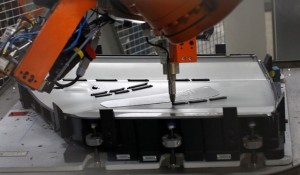

Carmakers using aluminium and composites to make vehicles lighter and therefore more fuel efficient are turning to special glues to bond the high-tech components.
Materials like aluminum and carbon fibre cannot be welded together and have to be glued with adhesives that will not lose their strength.
That puts industrial adhesives – made up of chemicals such as the polyolefins that are used in Croc shoes and tennis racket strings – at the top of carmakers” shopping lists, says a report in the US Automotive News.
The US$2.6 billion to $3.9 billion market for automotive adhesives accounts for less than 10 per cent of the global adhesives market, but industry experts forecast the amount of glue used in an average vehicle may grow by at least a third over the next five to 10 years, from around 15kg now.
“Those who can demonstrate that their glue has something different to offer, and that it can be easily integrated into production processes, will achieve good casino online margins,” said Fabrice Roghe, a partner specialising in industrial goods at Boston Consulting Group in Dusseldorf, Germany.
For suppliers such as Henkel, PPG and Atlas Copco, providing tailor-made adhesives that can absorb the shock of a crash and reduce rattles allows them to push for higher prices – and make more profits.
Stricter emissions rules in major markets mean cars have to become more fuel-efficient and less polluting, which in most cases means they will have to be lighter than last year”s average weight of 1402kg.
Henkel, the world”s largest maker of adhesives, is looking at more complex and specialist products used on cars, airplanes or mobile phones.
Although new-car sales in markets like Europe remain depressed, global sales may surge 28 per cent to 102 million cars by 2018, fueled by growth in Asia and North America, according to research firm IHS Automotive.
“We don”t buy glues off the peg but work very closely together with manufacturers on complex specific adhesive applications,” Michael Zuern, head of materials engineering at Mercedes-Benz, told Reuters.
Because adhesive bonding increases the stiffness of the body shell, the vehicle can better absorb bumps and in-car noise is dampened, said Zuern. It also makes for better handling and helps absorb the impact of a crash.
But adhesives aren”t without flaws. In 2010, Ferrari recalled 1,248 458 Italia cars after determining that a special adhesive used to attach a heat shield inside the wheel arch was prone to melting and had caused several cars to burst into flames. Ferrari replaced the glued sections of the heat shield with metal rivets.
